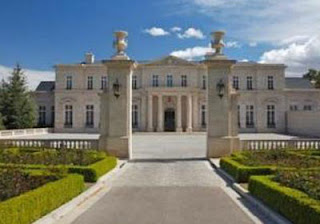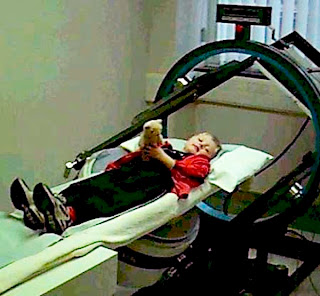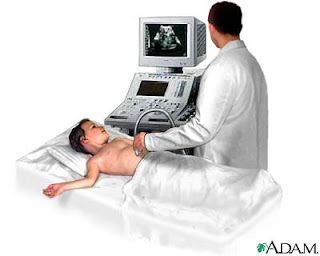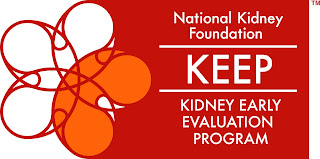



Broadway theater, commonly called simply Broadway, refers to theatrical performances presented in one of the 39 large professional theaters with 500 seats or more located in the Theatre District, New York (plus one theatre in Lincoln Center) in Manhattan, New York City. Along with London's West End theatre, Broadway theatre is usually considered to represent the highest level of commercial theatre in the English-speaking world.
The Broadway theatre district is a popular tourist attraction in New York City. According to The Broadway League, Broadway shows sold approximately $937 million worth of tickets in the 2007-08 season.

The Broadway theatre district is a popular tourist attraction in New York City. According to The Broadway League, Broadway shows sold approximately $937 million worth of tickets in the 2007-08 season.
18th and 19th Centuries
Early theatre in New York
New York (and therefore, America) did not have a significant theatre presence until about 1750, when actor-managers Walter Murray andThomas Kean established a resident theater company at the Theatre on Nassau Street, which held about 280 people. They presented Shakespeare plays and ballad operas such as The Beggar’s Opera. In 1752, William Hallam sent a company of twelve actors from Britain to the colonies with his brother Lewis as their manager. They established a theater in Williamsburg, Virginia and opened with The Merchant of Venice and The Anatomist.
The company moved to New York in the summer of 1753, performing ballad operas and ballad-farces likeDamon and Phillida. The Revolutionary War suspended theatre in New York, but thereafter theatre resumed, and in 1798, the 2,000-seatPark Theatre was built on Chatham Street (now called Park Row). The Bowery Theater opened in 1826, followed by others. Blackface minstrel shows, a distinctly American form of entertainment, became popular in the 1830s, and especially so with the arrival of the Virginia Minstrels in the 1840s.
Birth of the musical and post-Civil War
Theater in New York moved from downtown gradually to midtown beginning around 1850, seeking less expensive real estate prices. In 1870, the heart of Broadway was in Union Square, and by the end of the century, many theaters were near Madison Square. Theaters did not arrive in the Times Squarearea until the early 1900s, and the Broadway theaters did not consolidate there until a large number of theaters were built around the square in the 1920s and 1930s. Broadway's first "long-run" musical was a 50 performance hit called The Elves in 1857. New York runs continued to lag far behind those in London, but Laura Keene's "musical burletta" Seven Sisters (1860) shattered previous New York records with a run of 253 performances. It was at a performance by Keene's troupe of Our American Cousin in Washington, D.C. that Abraham Lincoln was shot.

The first theater piece that conforms to the modern conception of a musical, adding dance and original music that helped to tell the story, is considered to be The Black Crook, which premiered
in New York on September 12, 1866.
1890s and later
Charles Hoyt's A Trip to Chinatown (1891) became Broadway's long-run champion, holding the stage for 657 performances. This would not be surpassed until Irene in 1919. In 1896, theatre owners Marc Klaw and A. L. Erlanger formed the Theatrical Syndicate, which controlled almost every legitimate theatre in the U.S. for the next sixteen years. However, smaller vaudeville and variety houses proliferated, and Off-Broadway was well established by the end of the 19th century.
In the early years of the 20th century, translations of popular late-19th century continentaloperettas were joined by the "Princess Theatre" shows of the 1910s by writers such as P. G.Wodehouse, Guy Bolton and Harry B. Smith.Victor Herbert, whose work included some intimate musical plays with modern settings as well as his string of famous operettas (The Fortune Teller (1898), Babes in Toyland (1903), Mlle. Modiste (1905), The Red Mill (1906), and Naughty Marietta (1910)).

Florenz Ziegfeld produced annual spectacular song-and-dance revues on Broadway featuring extravagant sets and elaborate costumes, but there was little to tie the various numbers together. Typical of the 1920s were lighthearted productions like Sally; Lady Be Good; Sunny;No, No, Nanette; Oh, Kay!; and Funny Face.
Broadway today
Schedule

Although there are now more exceptions than there once were, generally shows with open-ended runs operate on the same schedule, with evening performances Tuesday through Saturday with an 8 p.m. "curtain" and afternoon "matinée" performances on Wednesday, Saturday and Sunday; typically at 2 p.m. on Wednesdays and Saturdays and 3 p.m. on Sundays, making a standard eight performance week. On this schedule, shows do not play on Monday, and the shows and theatres are said to be "dark" on that day. Actors and crew in these shows tend to regard Sunday evening through Tuesday evening as their "weekend".
The Tony Award presentation ceremony is usually held on a Sunday evening in June to fit into this schedule.In recent years, many shows have moved their Tuesday show time an hour earlier to 7 p.m. The rationale for the move was that fewer tourists took in shows midweek, so the Tuesday crowd in particular depends on local audience members. The earlier curtain therefore allows suburban patrons time after a show to get home by a reasonable hour. Some shows, especially those produced by Disney, change their performance schedules fairly frequently, depending on the season, in order to maximize access to their targeted audience.
Personnel
Both musicals and stage plays on Broadway often rely on casting well-known performers in leading roles to draw larger audiences or bring in new audience members to the theatre. Actors from movies and television are frequently cast for the revivals of Broadway shows or are used to replace actors leaving a cast.
In the past, stage actors had a somewhat superior attitude towards other kinds of live performances, such as vaudeville and burlesque, which were felt to be tawdry, commercial and low-brow—they considered their own craft to be a higher and more artistic calling.
Almost all of the people involved with a Broadway show at every level are represented by unions or other protective, professional or trade organization. The actors, dancers, singers, chorus members and stage managers are members of Actors' Equity Association (AEA), musicians are represented by the American Federation of Musicians (AFM), and stagehands, dressers, hairdressers, designers, box office personnel and ushers all belong to various locals of the International Alliance of Theatrical Stage Employees, also known as "the IA" or "IATSE" (pronounced "eye-ot-zee").
Producers and theatre owners
Most Broadway producers and theatre owners are members of the The Broadway League (formerly "The League of American Theatres and Producers"), a trade organization that promotes Broadway theatre as a whole, negotiates contracts with the various theatrical unions and agreements with the guilds, and co-administers the Tony Awards with the American Theatre Wing, a service organization.
The three non-profit theatre companies with Broadway theatres ("houses") belong to the League of Resident Theatres and have contracts with the theatrical unions which are negotiated separately from the other Broadway theatre and producers.
The majority of Broadway theatres are owned or managed by three organizations: the Shubert Organization, a for-profit arm of the non-profit Shubert Foundation, which owns 17 theatres (it recently retained full ownership of the Music Box from the Irving Berlin Estate); The Nederlander Organization, which controls 9 theatres; and Jujamcyn, which owns five Broadway houses.
Runs
 Most Broadway shows are commercial productions intended to make a profit for the producers and investors ("backers" or "angels"), and therefore have open-ended runs, meaning that the length of their presentation is not set beforehand, but depends on critical response, word of mouth, and the effectiveness of the show's advertising, all of which determine ticket sales.
Most Broadway shows are commercial productions intended to make a profit for the producers and investors ("backers" or "angels"), and therefore have open-ended runs, meaning that the length of their presentation is not set beforehand, but depends on critical response, word of mouth, and the effectiveness of the show's advertising, all of which determine ticket sales. Some Broadway shows are produced by non-commercial organizations as part of a regular subscription season—Lincoln Center Theatre, Roundabout Theatre Company, and Manhattan Theatre Club are the three non-profit theatre companies that currently have permanent Broadway venues.
Historically, musicals on Broadway tend to have longer runs than do "straight" (i.e. non-musical) plays. On January 9, 2006, The Phantom of the Opera at the Majestic Theatre became the longest running Broadway musical, with 7,486 performances, overtaking Cats.
Audience
Seeing a Broadway show is a common tourist activity in New York, and Broadway shows sell about a billion dollars worth of tickets annually, helping the tourist industry to generate billions more in restaurant and hotel revenues.
Total Broadway attendance in the 2007-2008 season was 12.27 million, which was approximately the same as the previous season (2006-2007). By way of comparison, London's West End theatre reported total attendance of 13.6 million for major commercial and grant-aided theatres in Central London for 2007.
Off-Broadway and Tours
 The classification of theatres is governed by language in Actors' Equity Association contracts. To be eligible for a Tony, a production must be in a house with 500 seats or more and in the Theatre District, which criteria defines Broadway theatre.
The classification of theatres is governed by language in Actors' Equity Association contracts. To be eligible for a Tony, a production must be in a house with 500 seats or more and in the Theatre District, which criteria defines Broadway theatre.After (or even during) successful runs in Broadway theatres, producers often remount their productions with a new cast and crew for the Broadway national tour, which travels to theaters in major cities across the country—the bigger and more successful shows may have several of these touring companies out at a time, some of them "sitting down" in other cities for their own long runs.
Tony Awards
 Broadway shows and artists are honored every June when the Antoinette Perry Awards (Tony Awards) are given by the American Theatre Wing and The Broadway League. The "Tony" is Broadway's most prestigious award, the importance of which has increased since the annual broadcast on television began. In a strategy to improve the television ratings, celebrities are often chosen to host the show, like Hugh Jackman and Rosie O'Donnell, in addition to celebrity presenters, many with little or no connection to the theatre.
Broadway shows and artists are honored every June when the Antoinette Perry Awards (Tony Awards) are given by the American Theatre Wing and The Broadway League. The "Tony" is Broadway's most prestigious award, the importance of which has increased since the annual broadcast on television began. In a strategy to improve the television ratings, celebrities are often chosen to host the show, like Hugh Jackman and Rosie O'Donnell, in addition to celebrity presenters, many with little or no connection to the theatre.




















